Our banquet dinner at Namu started slow and gained momentum with each course, but the restaurant’s concept was misleading. Chef Dennis Lee frames his food as “new California” cuisine, but several dishes were straightforward Korean. Oh well. At least they tasted good.
The Lee brothers – Dennis, Daniel, and David – opened Namu on December 1, 2006, in San Francisco’s Inner Richmond neighborhood. Namu means “wood” in Korean. Given that, the 14-foot bar’s made from reclaimed Golden Gate Park cypress and the floor is hand-carved oak. When it comes to ingredients, Chef Lee emphasizes local, seasonal and sustainable.
Namu’s Housemade Pickles Assortment ($5) included bean sprout with green onion, wok-seared carrot with sesame and kimchi made with Napa cabbage and fermented in oyster and shrimp sauces. Korean restaurants almost always dispense complimentary small plates – panchan. I guess since Namu is a “new California” restaurant, that courtesy doesn’t apply.
A salad of wild arugula, sesame, balsamic, walnuts, purslane and cucumber jelled pretty well, with bitter greens, a spicy finish and a little sweetness from the balsamic and walnuts.
“Aka Miso Soup, wakame, tofu” ($2) was a basic bowl of miso soup with tofu and seaweed, fine but not worth a photo.
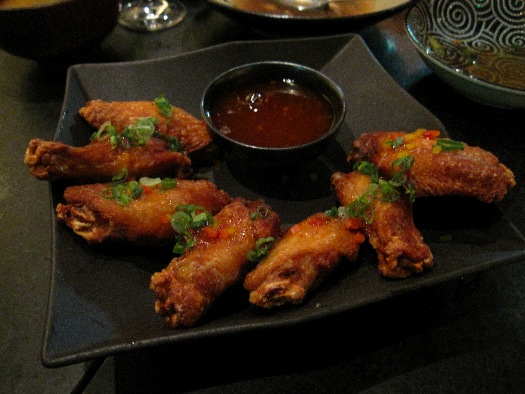
Crispy free-range chicken wings ($10) were fairly dry, and I was hoping for a more inspired pairing than sweet chili dipping sauce.
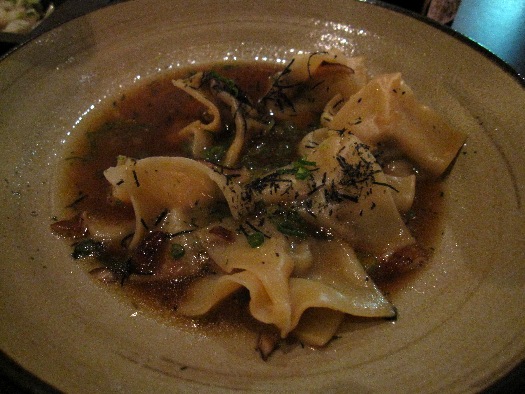
Shitake dumplings ($9) were excellent, thin-skinned, submerged in an earthy dashi mushroom broth and sprinkled with scallions and nori.
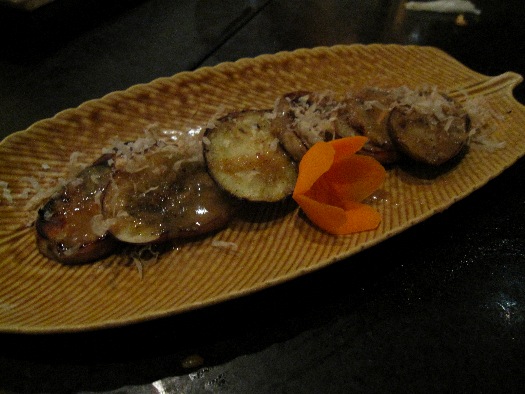
Medallions of supple grilled eggplant ($6) were treated with a sweet onion-sesame vinaigrette and topped with bonito flakes that squirmed in the heat.
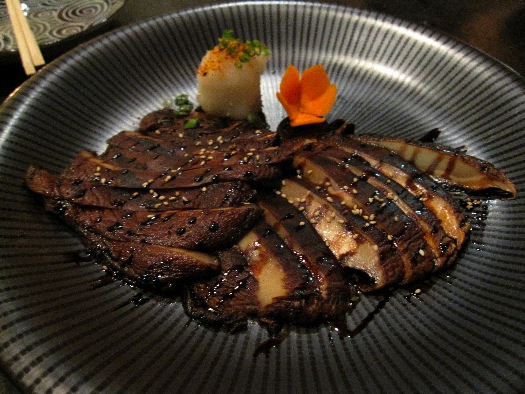
My M.O. is classic carnivore, but it Namu’s grilled Portobella mushrooms ($10) were awfully persuasive, marinated with a explosive blend of garlic, balsamic and rice vinegar that infused the mushrooms. No, these mushrooms were not “meaty.” There’s no substitute for meat, ever, but in terms of mushrooms, these were some of my favorites.
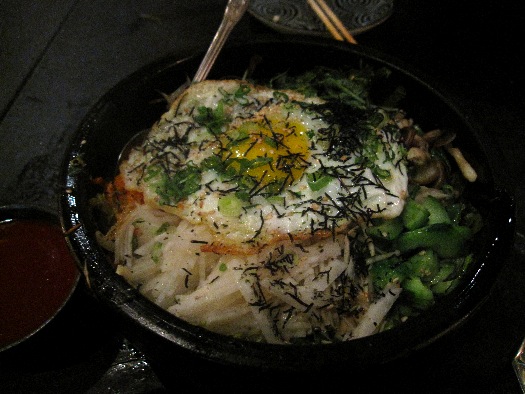
“Rice, pasture raised egg, daily vegetables, tofu in a sizzling stone pot” ($17) was really just bibimbap, a standard Korean dish that’s often just as good but rarely so expensive, pasture-raised egg or otherwise. The chile paste added good flavor and the vegetables and mushrooms were clearly fresh, but $17 for a dish with no meat or fish? Really?
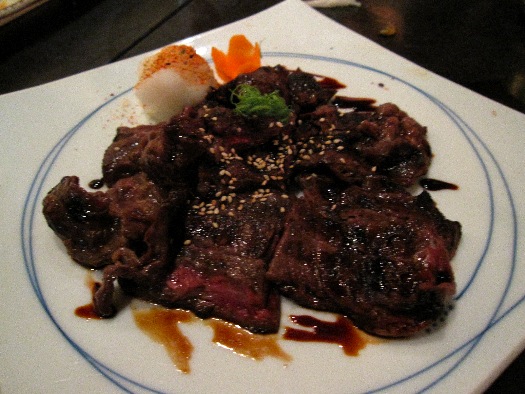
Niman Ranch Kobe style skirt steak ($19) was lavished with a traditional Korean kalbi barbecue marinade that included chile sauce, Mirin, ginger and garlic. The rosy, seared meat was finished with teriyaki glaze. The flavor was so bold, and the steak was such high quality that the meal was nearly worth writing about for this dish alone.
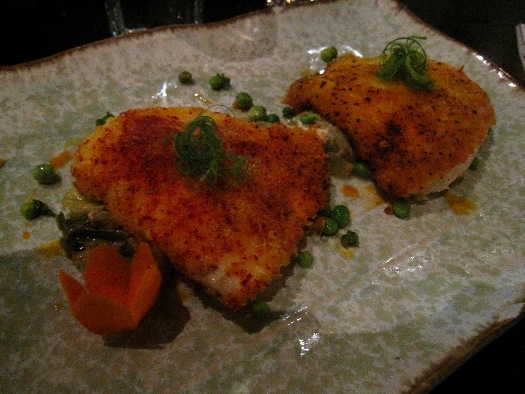
Kochukaru panko crusted halibut ($22) was another good entree, though the white fish fillet was probably a little overcooked. Regardless, the firm lightly-breaded fillets were served over creamed ginger leeks and fried English peas.
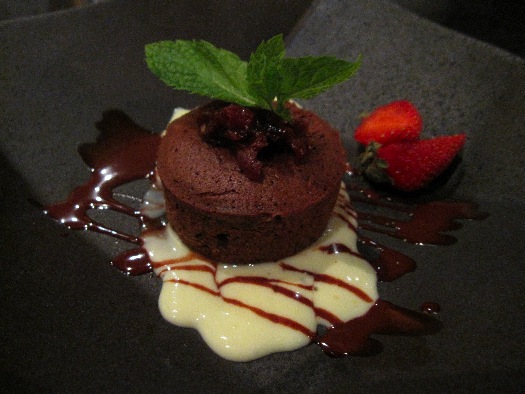
Namu’s desserts could both be categorized as “new California.” In Korean restaurants, you won’t find dessert very often and we could have done without them here as well. Adzuki Red Bean Cupcake ($6) was basically chocolate cake topped with a smattering of red beans. The beans didn’t flavor the cupcake, like I’d hoped. It was served with yuzu crème anglaise, which didn’t have enough citrus flavor.
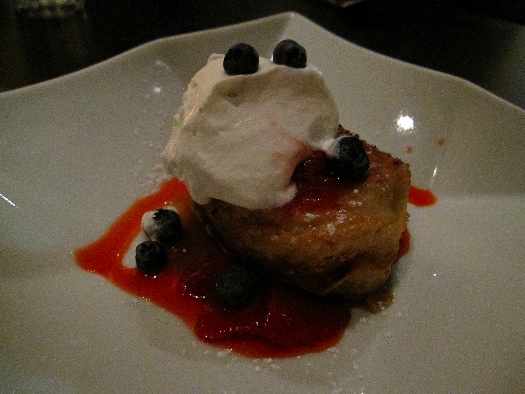
Yuzu French Toast ($8) was somewhat better, featuring golden brioche, strawberry compote and fresh blueberries. The toast could have done with a smaller dome of whipped cream.
The dimpled metal pot of Pink Siberian Roses & Lavender Herbal Tea ($4) was supposedly high in Vitamin C, rich in antioxidants and combats stress, fatigue, headache and insomnia. The aromatic tea was a good stomach-settler after a big meal.
Namu was sharp looking and had three very good dishes (shitake dumplings, Portabellas, skirt steak), but the “new California” was confusing. If the menu had a tighter focus, Namu could become a destination, and not just a solid neighborhood restaurant.


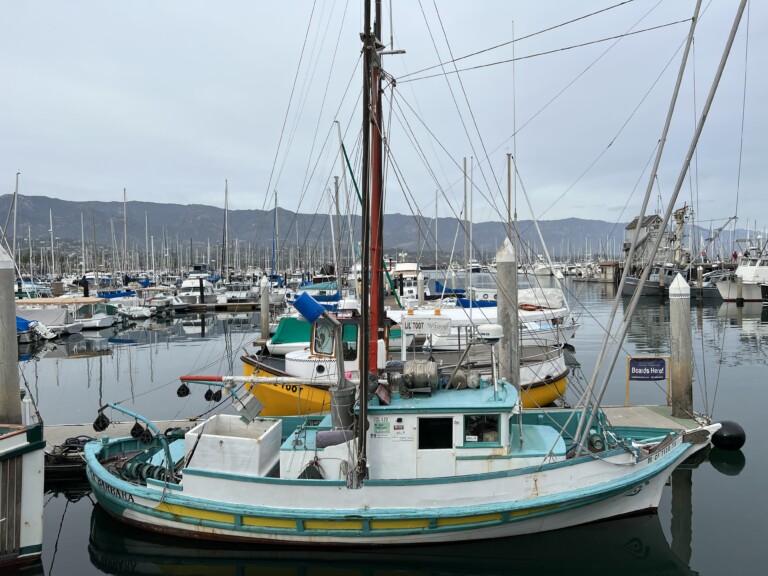
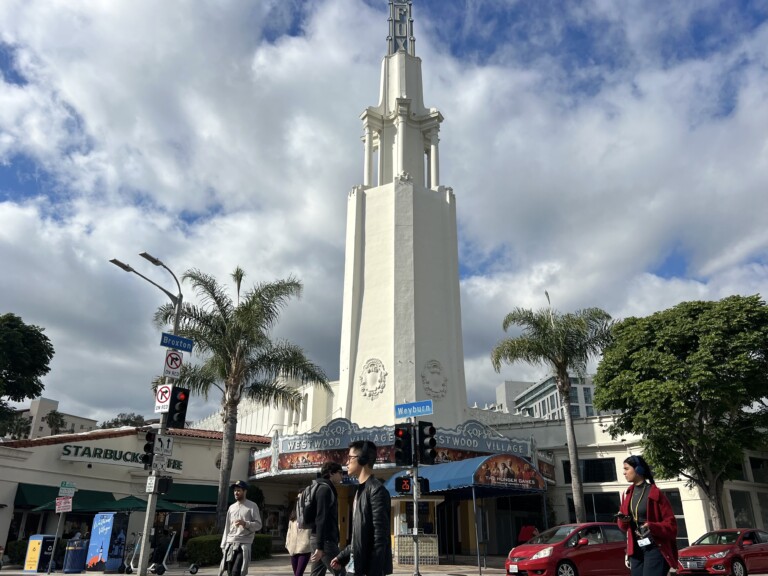





Blog Comments
Bunker
August 20, 2009 at 4:22 PM
Hmm… I read blogs on a similar topic, but i never visited your blog. I added it to favorites and i’ll be your constant reader.